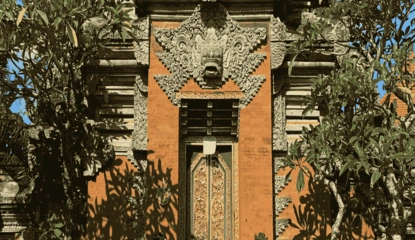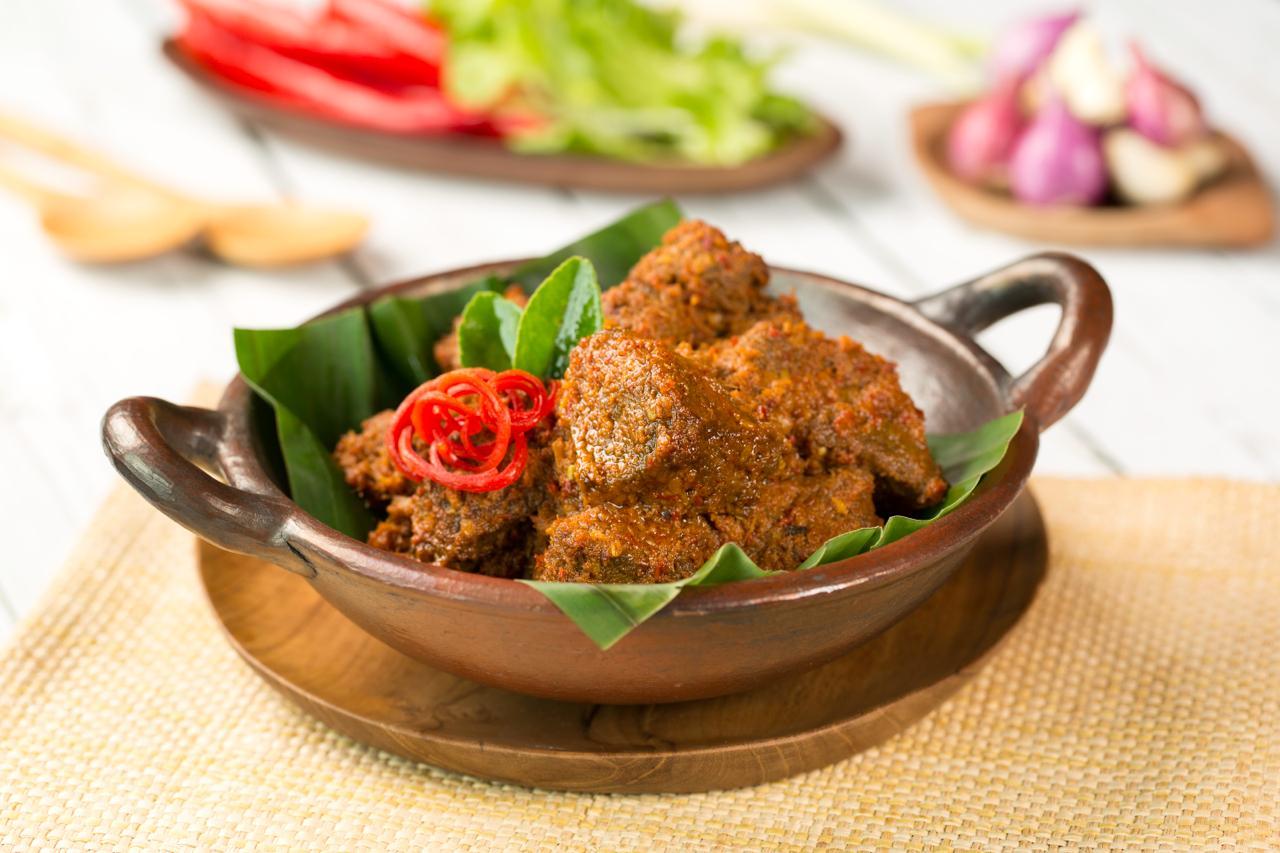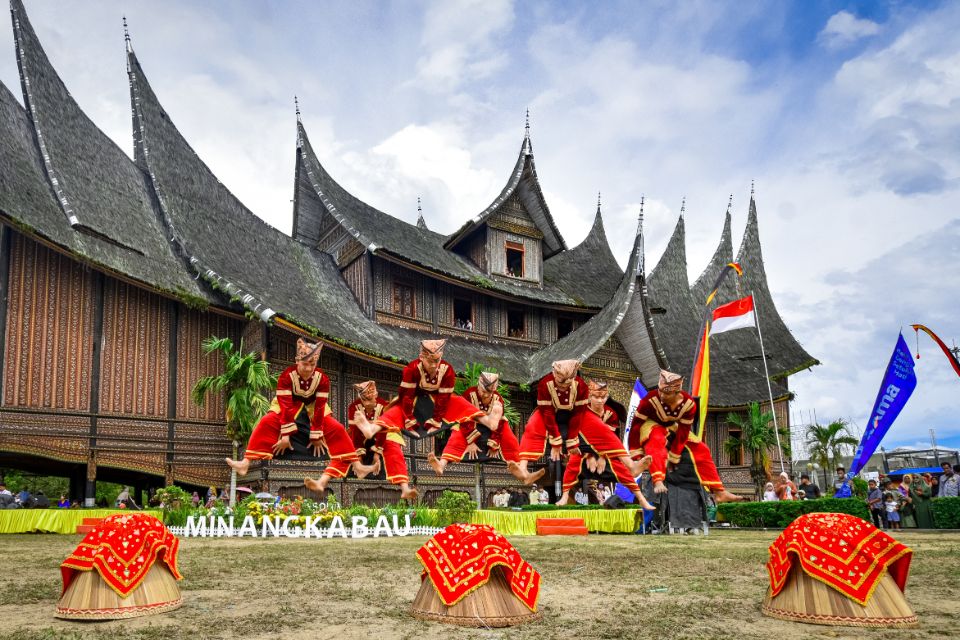Indonesia’s rich culinary heritage is celebrated worldwide for its diversity and depth of flavor. Among its vast array of traditional dishes, Rendang is undoubtedly one of the most iconic. Hailing from West Sumatra, Rendang is a slow-cooked, caramelized beef curry that has been hailed as one of the world’s most delicious dishes. It is more than just food; it’s a symbol of Indonesian culture, particularly the Minangkabau people who perfected its recipe over centuries.
The Origins of Rendang
Rendang’s roots lie in the Minangkabau culture of West Sumatra, one of Indonesia’s most influential ethnic groups. The dish dates back hundreds of years and is believed to have originated as a way of preserving meat over long periods before refrigeration was available. The Minangkabau people discovered that slow-cooking beef in a flavorful mix of coconut milk and spices not only enhanced its flavor but also allowed it to be kept for weeks.
The word "rendang" comes from the Minang term 'merendang,' which refers to the slow-cooking process at the heart of the dish. This technique transforms the ingredients into a rich, dark, and flavorful caramelized curry, with the meat absorbing the spices and becoming irresistibly tender.
Traditionally, Rendang is more than just food—it is a dish steeped in ritual, shared during important events such as weddings, religious celebrations, and community gatherings. In Minangkabau culture, the preparation and sharing of Rendang symbolize kinship, gratitude, and respect.
The Rendang Cooking Process: A Culinary Art
Cooking Rendang is far from an ordinary task—it is a labor of love that demands patience, precision, and mastery. This traditional dish owes its distinct flavor and texture to a meticulous process that has been passed down through generations.
The journey begins with the ingredients, which are simple yet rich and deeply rooted in Indonesia’s culinary heritage. At the heart of Rendang is beef, the most traditional protein choice, though variations with chicken or lamb exist. The dish’s creamy base comes from freshly squeezed coconut milk, which adds a natural sweetness and velvety texture. To elevate the flavors, a blend of aromatic spices is used, including lemongrass, galangal, turmeric leaves, and kaffir lime leaves. Essential to the dish is the bumbu, a spice paste made by blending shallots, garlic, and chilies, which provides heat and depth to the flavor profile.
What truly sets Rendang apart is its traditional slow-cooking process, a technique that transforms these humble ingredients into a masterpiece. The beef is simmered in coconut milk and the spice mixture over a low flame for hours—often 4 to 6 hours—until the liquid gradually evaporates. As the sauce reduces, the beef absorbs the rich flavors, and the dish transitions from a curry-like consistency into a dry, caramelized coating. This evolution is what gives Rendang its signature texture and deeply concentrated flavors.
The result is nothing short of extraordinary: tender, melt-in-your-mouth beef enveloped in a richly seasoned, aromatic coating. The slow-cooking process is not merely a technique but an essential step in unlocking the complex and bold flavors that make Rendang a globally celebrated dish.
Variants of Rendang
While the beloved Rendang Daging (beef Rendang) remains the most iconic and popular version, this celebrated dish has inspired numerous regional variations and adaptations. Each variant reflects the diversity and creativity of Indonesian cuisine while retaining Rendang's signature depth of flavor.
One popular alternative is Rendang Ayam, a lighter version made with chicken, which offers a tender, milder option for those seeking a variation from the traditional beef. Another notable variant is Rendang Paru, which features beef lungs as its main ingredient. A delicacy in Minangkabau cuisine, this dish highlights the region's resourcefulness and respect for using every part of the animal.
For those looking for something unique, Rendang Telur uses eggs as the primary ingredient, simmered in the rich, fragrant sauce that defines Rendang. Meanwhile, in coastal areas of West Sumatra, Rendang Ikan (fish Rendang) takes center stage, showcasing the use of fresh, locally available fish instead of land-based proteins like beef.
A more modern twist on this classic dish is Rendang Hijau (green Rendang), which substitutes red chilies for green chilies. This variation offers a slightly milder spice level while introducing a distinct flavor profile that appeals to those seeking a contemporary take on the traditional recipe.
These adaptations demonstrate the incredible versatility of Rendang, accommodating different ingredients and tastes while staying true to its rich, slow-cooked essence. Whether made with beef, chicken, fish, or even eggs, the soul of Rendang lies in its intricate blend of spices, its patient cooking process, and the cultural heritage it represents.
Cultural Significance of Rendang
For the Minangkabau people of West Sumatra, Rendang is far more than just a dish—it is a profound expression of cultural identity, symbolism, and philosophy. The preparation and presentation of Rendang reflect values deeply embedded in the Minangkabau way of life, making it a cornerstone of their traditions.
Rendang is steeped in meaning as a symbol of tradition and kinship. It is often prepared during significant family gatherings, weddings, and ceremonies, where sharing this dish becomes a powerful expression of unity and togetherness. The process of cooking Rendang itself fosters connection, as it is usually a collaborative effort involving family and community members coming together to create the dish with care and precision.
As a dish for celebrations, Rendang holds a central place in special occasions such as Eid al-Fitr and Eid al-Adha, where it is reserved to honor these meaningful events. The elaborate, slow-cooking process mirrors the respect the Minangkabau have for these occasions, symbolizing the time, effort, and reverence dedicated to marking life’s major milestones.
Beyond its festive and communal importance, Rendang carries philosophical meaning that resonates with Minangkabau values. The dish's core ingredients represent fundamental principles of their culture: the coconut milk (karambia) reflects wisdom, the meat (daging) embodies tradition and spirituality, the chilies (lado) signify patience, and the spices (bumbu) symbolize harmony and unity. Together, these ingredients create not only a flavorful dish but also an expression of the balanced and thoughtful principles that govern Minangkabau life.
To the Minangkabau people, eating and making Rendang is not merely about nourishment; it is about engaging with these intangible values, passing them on to future generations, and honoring the shared heritage that defines their identity. The process of creating Rendang becomes a celebration of cooperation, respect, and unity, culminating in a dish that connects both the individual and the community to their cultural roots.
Global Recognition
Rendang is not just a source of pride for Indonesia; it has also achieved international acclaim as one of the world’s most celebrated dishes. Its rich flavors, intricate cooking process, and cultural significance have captivated food lovers across the globe, earning it a place in the spotlight on various prestigious platforms.
In 2011 and again in 2017, Rendang was crowned the world’s most delicious food by CNN’s “World’s 50 Best Foods” list, solidifying its status as a global culinary treasure. This recognition highlighted not only its incredible taste but also the artistry and tradition behind its preparation. Furthermore, Rendang has been proposed for inclusion in UNESCO’s list of Intangible Cultural Heritage, a testament to its deep cultural and historical significance within the Minangkabau community and beyond.
While Rendang’s roots lie in Indonesia, its popularity has spread throughout Southeast Asia, particularly in Malaysia and Singapore, where similar renditions of the dish are embraced and celebrated. Today, it is a staple on the menus of Indonesian restaurants and in Indonesian communities worldwide, introducing its unique and bold flavors to an ever-growing international audience.
Rendang’s global recognition is a reflection of its universal appeal—a dish that transcends borders while remaining a proud symbol of Indonesia’s rich culinary heritage.
Where to Try Authentic Rendang
For the most authentic Rendang experience, a visit to Padang or Bukittinggi in West Sumatra is essential. These regions are the heart of Minangkabau culture, where traditional cooking methods and recipes have been preserved for generations, offering a truly immersive culinary journey.
In Padang and traditional Minangkabau communities, Rendang Rumah Keluarga—homemade Rendang prepared in family kitchens or during cultural events—showcases the care, patience, and skill that go into making this celebrated dish. Sharing a meal in a family home is more than just a taste experience; it’s an opportunity to witness the deep cultural connection Rendang holds within the community.
Another excellent way to savor authentic Rendang is by visiting the iconic Padang restaurants, known for serving a wide variety of Minangkabau dishes. These establishments offer a vibrant array of flavors, with Rendang often positioned as the highlight of the spread. The experience of dining here provides a taste of both Rendang’s timeless flavors and its integral role in the region’s cuisine.
For a more casual, on-the-go approach, the bustling food stalls at Pasa Ateh in Bukittinggi offer a chance to enjoy freshly cooked, homemade Rendang. This busy market environment embodies the spirit of West Sumatran culture, where food stalls showcase the rich flavors of Minangkabau cooking to locals and visitors alike.
Whether in a family setting, a well-loved Padang restaurant, or at a lively West Sumatran market, trying authentic Rendang in its place of origin is an unforgettable cultural and culinary experience.
Why You Should Try Rendang
Rendang is more than just a meal—it’s a bridge to Indonesian culture and history. Its bold flavors, complex preparation process, and cultural significance make it a must-try for anyone exploring Indonesian cuisine. Every bite tells a story of tradition, patience, and generations of culinary expertise.
For Indonesians, Rendang is a source of national pride, a dish that encapsulates the Minangkabau spirit. For the rest of the world, it’s an unforgettable taste of West Sumatra, one of the many reasons why Indonesia continues to reign as a global culinary destination.
So, the next time you encounter Rendang, savor not only its rich flavors but also the rich history and values it carries. One thing’s for sure: Rendang has earned its place as one of the most beloved dishes in the world.










